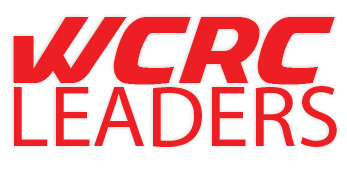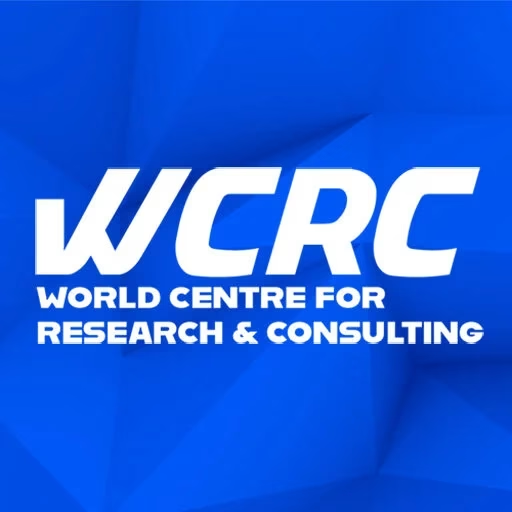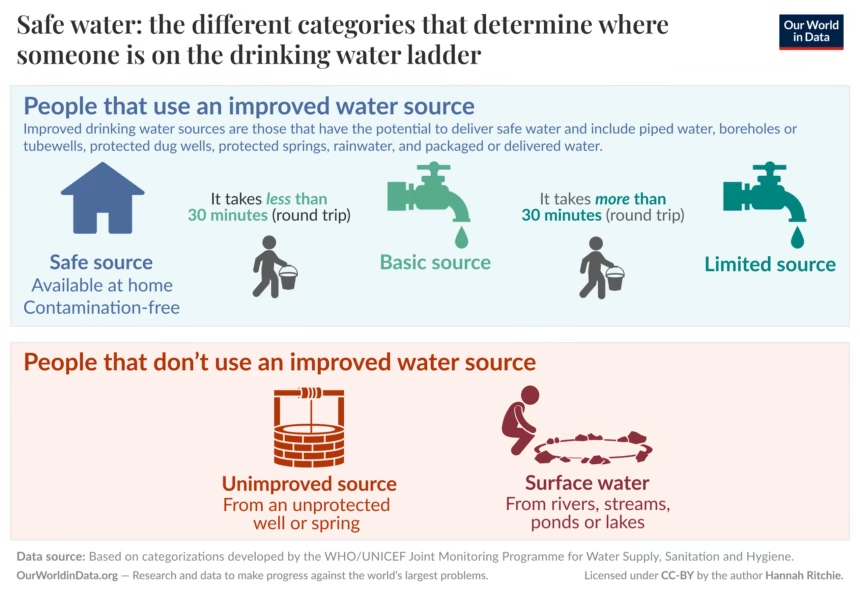Understanding Personal Branding
Personal branding refers to the conscious and intentional effort to create an image and establish a reputation based on one’s values, expertise, and skills. This concept has gained significant traction in recent years, particularly in the professional landscape, as individuals increasingly recognize the importance of their personal brand in achieving career success. In essence, personal branding is about defining how one wants to be perceived by others and actively managing that perception over time.
- Understanding Personal Branding
- In leadership roles, personal branding plays a critical role in influencing how one is viewed by peers, subordinates, and superiors. Effective leaders often possess strong personal brands that resonate with their target audiences. A well-curated personal brand can enhance credibility, foster trust, and inspire others, all of which are vital attributes for any effective leader. As individuals strive for career advancement, their personal brand can become a decisive factor in separation from competitors, underscoring the significance of a carefully cultivated professional image.
- Identifying Your Unique Value Proposition
- Building an Online Presence
- Creating Valuable Content
- Networking Strategically
- Developing Thought Leadership
- Receiving and Incorporating Feedback
- Maintaining Consistency Across Platforms
- Measuring Your Brand’s Impact
In leadership roles, personal branding plays a critical role in influencing how one is viewed by peers, subordinates, and superiors. Effective leaders often possess strong personal brands that resonate with their target audiences. A well-curated personal brand can enhance credibility, foster trust, and inspire others, all of which are vital attributes for any effective leader. As individuals strive for career advancement, their personal brand can become a decisive factor in separation from competitors, underscoring the significance of a carefully cultivated professional image.
Moreover, aligning personal values with one’s professional image is pivotal in establishing an authentic personal brand. When leaders portray their true selves and communicate their core beliefs, it resonates with authenticity and sincerity, creating a deeper connection with others. This alignment not only contributes to career growth but also strengthens one’s leadership effectiveness. Consequently, individuals aspiring to heighten their leadership potential should recognize that a robust personal brand is not merely a tool for marketing oneself; instead, it serves as a foundational aspect of their professional journey. Expanding and refining that personal brand is, therefore, essential for those who seek to ascend in their careers and leave a lasting impact in their respective fields.

Identifying Your Unique Value Proposition
In the competitive landscape of leadership, articulating a unique value proposition is essential. This proposition encapsulates your distinct strengths, skills, and experiences that set you apart from others. To effectively identify your unique value proposition, conducting a personal SWOT analysis—an assessment of Strengths, Weaknesses, Opportunities, and Threats—can be a vital first step.
Begin by identifying your strengths. Consider your competencies and what you excel at, both professionally and personally. Your skills might include leadership qualities, technical expertise, or interpersonal abilities. It can be beneficial to seek feedback from colleagues or mentors to gain a comprehensive understanding of your strengths. Gathering insights can highlight aspects of your skill set that you may overlook.
Next, turn to your weaknesses. Recognize areas where you require improvement or where you face challenges. Being aware of your weaknesses does not equate to a lack of confidence; rather, it demonstrates a commitment to self-improvement. This self-awareness can also influence how you approach opportunities to improve your skills or develop new ones.
Opportunities are elements in your professional environment that you can leverage for advancement. These could include trends in your industry, networking prospects, or professional development programs. Identifying these will help you position your unique value proposition effectively.
Lastly, consider potential threats that could impede your progress. These might include competitive forces, evolving industry standards, or shifts in organizational priorities. By recognizing these threats, you can develop strategies to mitigate their impact, thus reinforcing your value proposition in a challenging landscape.
Once you have gathered this information, synthesize your findings to create a compelling personal brand statement. This statement should clearly articulate how your strengths can address the unique needs of your target audience or organizations. Highlighting your unique value proposition will empower you to communicate your professional identity effectively, enhancing your leadership career prospects.
Building an Online Presence
In today’s digital landscape, having a robust online presence is essential for effective personal branding, particularly for those aspiring to enhance their leadership careers. Your online footprint serves as a reflection of your professional persona, and optimizing it can significantly influence how stakeholders perceive your leadership qualities. The cornerstone of this digital presence is a well-crafted LinkedIn profile. Ensure that your profile is comprehensive, featuring a professional photograph, an engaging headline, and a detailed summary that articulates your career aspirations and accomplishments. Use relevant keywords connected to your field of expertise and leadership skills to improve your visibility in search results.
Expanding beyond LinkedIn, establishing professional accounts on platforms such as Twitter and Instagram can further highlight your leadership attributes. Twitter can be a valuable tool for sharing insights on industry trends, participating in discussions, and networking with thought leaders. Regularly tweet about relevant topics, share articles that resonate with your audience, and engage in conversation to demonstrate your expertise and commitment to continuous learning.
Instagram, though primarily a visual platform, can also be an effective channel for personal branding. Utilize this platform to share images and stories that reflect your career journey, leadership experiences, or involvement in community initiatives. By incorporating thoughtful captions and strategic hashtags, you can attract followers who share similar interests and values, thus building a supportive network.
Remember, consistency is key in maintaining a strong online presence. Adhere to a professional tone across all platforms while ensuring that the content reflects your unique personality and leadership vision. Over time, your cohesive online presence will foster trust and credibility among peers, ultimately supporting your goal of establishing a notable leadership career.
Creating Valuable Content
Establishing a strong personal brand is pivotal in enhancing one’s leadership career, and one of the most effective ways to achieve this is through content creation. Creating valuable content not only showcases your expertise but also helps in establishing authority and credibility within your field. Engaging content can come in various forms, such as blogs, videos, and podcasts, each offering unique avenues for effective communication.
Blogs, for instance, allow for in-depth exploration of relevant topics and provide a platform for sharing insights on leadership principles and practices. They can be tailored to address common challenges faced in leadership roles, offering actionable advice and personal anecdotes that resonate with readers. Integrating keywords related to personal branding and leadership can enhance the visibility of your blog posts, ensuring they reach the intended audience.
Videos serve as a dynamic medium for content dissemination, allowing for visual storytelling that can captivate your audience. By creating informative videos that discuss leadership topics or share experiences, you can engage viewers in a manner that static text cannot achieve. Utilizing platforms like YouTube or social media can further amplify reach, fostering connections with a wider audience.
Podcasts represent another impactful option, offering an intimate way to communicate thoughts and insights on leadership. They provide a platform for discussions, interviews, or even solo reflections that can deepen audience understanding of various leadership concepts. The auditory nature of podcasts allows for multitasking, making them accessible for individuals seeking to develop their leadership skills while on the go.
Regardless of the content type chosen, consistency is key. Regularly sharing valuable insights that resonate with your target audience ensures that you remain relevant and continue to build your authority in your field. By focusing on creating and disseminating valuable content, aspiring leaders can effectively optimize their personal branding and enhance their career trajectory.
Networking Strategically
Networking plays a pivotal role in personal branding, particularly for those aiming to excel in leadership careers. Building meaningful professional relationships allows individuals to cultivate a reputation that resonates within their industry. By engaging strategically with others, aspiring leaders can leverage their networks to enhance visibility and create opportunities for career advancement.
One effective avenue for networking is attending industry events. Conferences, seminars, and workshops offer unparalleled opportunities to connect with thought leaders and peers who share similar interests. During these events, individuals can participate in discussions, ask questions, and exchange insights, which helps solidify their presence and expertise in the field. Ensuring that one is prepared with an elevator pitch and business cards can facilitate smoother introductions and follow-ups after the event.
In addition to in-person engagements, joining professional organizations provides a structured approach to networking. These organizations often host events, provide resources, and foster communities of like-minded individuals. Engaging in such groups allows members to share knowledge, collaborate on projects, and support one another’s career endeavors. Furthermore, taking on leadership roles within these organizations can further establish credibility and enhance one’s personal brand.
In today’s digital age, social media platforms are invaluable for networking. Professionals should utilize LinkedIn and Twitter to connect with industry professionals, engage in relevant discussions, and share thought leadership content. By curating their online presence and actively participating in conversations, individuals can strengthen their professional brand and expand their reach. It is crucial, however, to balance online networking with authentic engagement, as meaningful interactions often yield the best results.
In summary, strategic networking involves a combination of in-person events, participation in professional organizations, and effective use of social media. By prioritizing these activities, individuals can enhance their personal branding, paving the way for a more successful leadership career.
Developing Thought Leadership
Establishing oneself as a thought leader in a specific industry is essential for enhancing personal branding and career advancement in leadership roles. Thought leadership not only increases visibility but also builds authority and credibility among peers and potential followers. To achieve this, it is crucial to consistently share innovative ideas that contribute meaningfully to ongoing discussions relevant to one’s field.
One effective strategy involves engaging in public speaking opportunities at conferences, workshops, and local events. Speaking on relevant topics not only showcases expertise but also allows for direct interaction with the audience, fostering connections that may lead to further influence. By presenting insights and engaging in dialogue, individuals can position themselves as trusted authorities in their industry.
Another significant avenue for thought leadership is contributing to industry publications, blogs, or online forums. By writing articles or essays that explore current trends, challenges, or future predictions, professionals can share their unique perspectives and solutions. This proactive approach not only enhances one’s personal brand but also builds a reputation as a go-to resource in the field.
Additionally, leveraging social media platforms can amplify thought leadership efforts. Sharing original content, engaging with industry discussions, and participating in conversations relevant to one’s area of expertise are all vital for increasing visibility. Regularly posting valuable insights can attract a following and encourage peers to engage, reinforcing one’s position as an industry leader.
In conclusion, developing thought leadership is a continuous journey that involves sharing knowledge through various channels. By engaging in public speaking, contributing to reputable publications, and utilizing social media, professionals can effectively enhance their personal branding and establish a firm foothold in leadership positions within their industry.
Receiving and Incorporating Feedback
In the realm of personal branding, the ability to effectively receive and incorporate feedback is paramount. Feedback serves as a crucial tool that allows individuals to gain insights into how they are perceived by others, which can significantly impact their leadership trajectory. To begin with, one effective strategy for gathering constructive feedback is to engage in informal conversations with colleagues, mentors, and supervisors. By fostering an environment of open communication, individuals can encourage honest discussions regarding their strengths and areas for improvement. Moreover, structured feedback mechanisms such as surveys or one-on-one performance reviews can also provide valuable insights into perceptions of one’s personal brand.
Once feedback is collected, the next step is to analyze and prioritize the information received. Identifying recurring themes or specific suggestions will aid in understanding which aspects of the personal brand require enhancement. It is essential to approach feedback with an open mindset, recognizing that constructive criticism is not a personal attack but rather a means to grow and adapt as a leader. Taking the time to reflect on this input allows for focused improvements aligned with an individual’s professional goals.
Incorporating feedback into one’s personal branding strategy can take various forms. For instance, an individual might choose to highlight certain skills or characteristics that resonate positively with peers, or alternatively, they may work to amend behaviors that have been flagged as unhelpful. Additionally, seeking mentorship from those who provide insightful feedback can further refine personal branding efforts. Regularly revisiting and adjusting one’s approach based on ongoing feedback enables continuous growth and development, ultimately enhancing leadership effectiveness.
By valuing feedback and utilizing it to inform personal branding decisions, individuals can significantly bolster their leadership presence and career potential. This iterative process of receiving and integrating constructive criticism is essential for anyone striving for growth in their professional journey.
Maintaining Consistency Across Platforms
Consistency is a vital aspect of effective personal branding, particularly for individuals aspiring to enhance their leadership careers. It helps in establishing a recognizable identity that is easily associated with one’s values and expertise. A consistent brand image fosters trust and credibility among peers, potential collaborators, and followers. When your messaging, visuals, and core values align across various platforms, it enhances your overall presence and influence as a leader.
To maintain consistency, start by defining your core values and mission. These elements serve as the foundation for your brand and should reflect your professional aspirations and personal beliefs. Once you have a clear understanding of what you stand for, it becomes easier to communicate your message consistently across different platforms, such as LinkedIn, personal websites, and social media channels. Additionally, consider creating a brand style guide that outlines your preferred color schemes, fonts, and tone of voice. This serves as a reference point to ensure that all content produced aligns with your brand identity.
Another practical tip to ensure consistency is to regularly audit your online presence. Check that your profiles across various platforms convey the same message and visuals. Inconsistent information, such as differing job titles or conflicting statements about your skills, can confuse your audience and undermine your brand. Moreover, consider utilizing scheduling tools to manage your posts effectively, ensuring that content released across platforms aligns with your branding strategy and public persona.
Engaging with your audience is also crucial. Maintain a tone that resonates with your core values while responding to comments or messages. This approach reinforces your brand and showcases your leadership style. When your audience sees a unified presence and clear messaging, it enhances your reputation and positions you as a credible leader in your field.
Measuring Your Brand’s Impact
To effectively measure the impact of your personal branding efforts, it is crucial to establish specific metrics or key performance indicators (KPIs) that can provide insightful data on your progress. These KPIs help to assess various dimensions of your branding strategy, enabling you to adjust and enhance your approach to maximize effectiveness in your leadership career.
One of the primary KPIs to consider is engagement. This can be evaluated through metrics such as social media interactions, comments, shares, and follower growth, reflecting how well your personal brand resonates with your audience. Engaging content that sparks conversations can indicate a strong connection to your professional persona and leadership style. Furthermore, tracking attendance at events, webinars, or networking opportunities can also offer insight into your brand’s reach and appeal.
Another essential KPI is perception monitoring. This involves gathering feedback through surveys, interviews, or informal discussions to better understand how your brand is viewed by peers, colleagues, and industry leaders. Utilizing platforms like LinkedIn to solicit endorsements and recommendations can also provide valuable qualitative data regarding your leadership capabilities and brand influence. Analyzing this feedback helps identify strengths and areas for improvement, ensuring your personal brand aligns with your career aspirations.
Additionally, tracking career growth can serve as a crucial indicator of your brand’s effectiveness. Metrics such as promotions, salary growth, and job offers can reflect the impact of your personal brand within your industry. By documenting these milestones, you can correlate specific branding strategies with tangible career advancements.
Ultimately, measuring your brand’s impact is a continuous process that necessitates regular evaluation and adjustments. By closely monitoring these KPIs, you can ensure your personal branding efforts foster professional growth and reinforce your identity as a leader in your field.
PersonalBranding #BrandYourself #BuildYourBrand #LeadershipBrand #ExecutiveBranding #ThoughtLeadership #InfluentialBrand #ReputationManagement #AuthenticBrand #PowerfulBrand #CareerGrowth #SuccessMindset #ProfessionalBranding #BusinessInfluence #ExpertPositioning #AuthorityBuilding #IndustryInfluencer #NetworkingSuccess #LeadershipDevelopment #LeadershipMatters LeadershipBranding #LeadershipSuccess #LeadWithImpact #ExecutivePresence #NextGenLeadership #EliteLeadership #VisionaryLeader #LeadershipInfluence #StrategicLeadership #LeaderMindset









